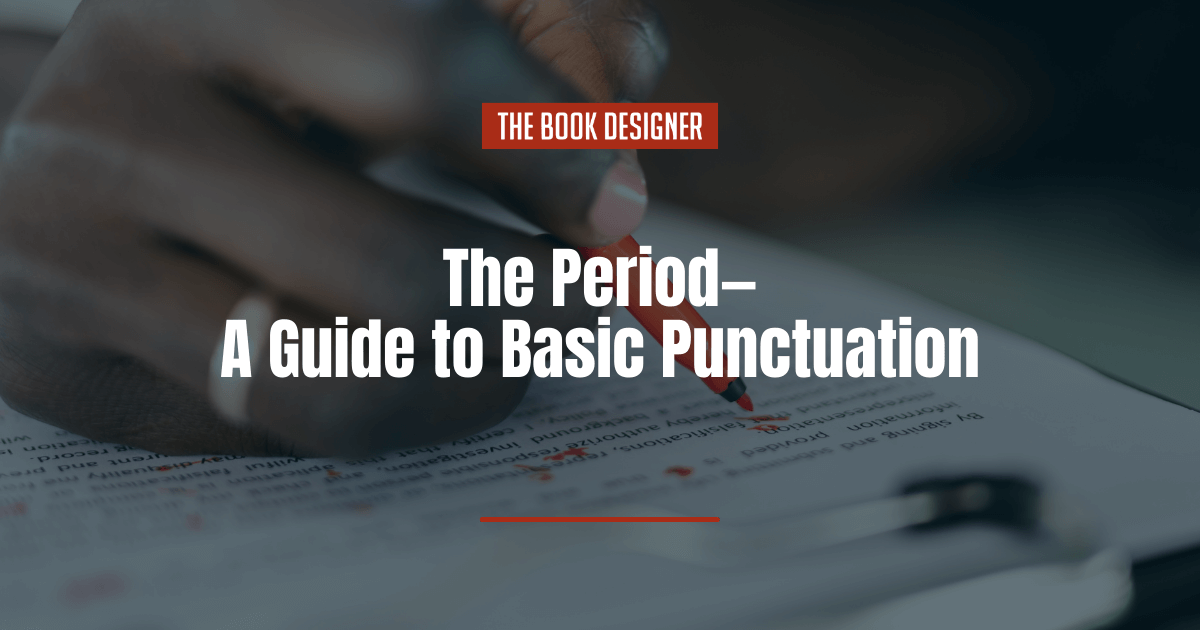When it comes to perfecting English grammar, we can all breathe a sigh of relief knowing that when to use a period (also called a “full stop” in some countries) is just about as easy as it gets.
The rules and uses are relatively simplistic, often the first thing we learn about when we’re just starting to hone our reading and writing skills. What follows is a clear and comprehensive guide to the period, its role and position in a sentence, and how to most effectively use a period.
There are a few considerations when deciding where and when to use a period:
The Period: What Exactly Does it Do?
Two of the main types of sentences in English are the interrogative sentence and the declarative sentence. Whereas the former is seeking information and ends in a question mark, the latter is stating information and generally ends in a period. Take, for example, the following sentence:
Paris is the capital of France.
It’s simply stating a fact. There is no inquisition or emphasized emotion; the sentence can simply end in a period. Facts that must either be true or false aren’t the only type of content the ends in a period, though.
Any declarative statement, whether it’s a proven fact or a stated opinion, ends in a period.
Spring is my favorite season; the weather in spring is much more enjoyable than the weather in autumn.
This sentence details an opinion that is, quite frankly, highly debatable.
Although a number of people would be inclined to argue against the point being made in this sentence, it is, in fact, declarative. The writer is making a statement; in this case, it is irrelevant whether that statement is true, false, or a matter of opinion.
When to Use a Period with Quotation Marks
Periods at their most basic point (that is, on their own as the sole punctuation in a sentence) are rarely problematic. The difficulty that many writers experience comes when the period has to play nice with other punctuation.
Fortunately, though, the period’s place in regard to quotation marks is basic and easy to remember: the period always goes inside the closing quotation marks. This goes for both dialogue and for the recitation of information. Take these two sentences, for example:
Most children will agree that all of the greatest bedtimes stories start with the phrase “once upon a time.”
“I think,” Mark began, “that I might’ve forgotten to do last night’s homework.”
The first, of course, includes the repetition of a common saying. The second illustrates what is perhaps the most common use of quotation marks; that is, dialogue. While both use quotation marks differently, the placement of the period remains the same. The period always goes inside the closing quotation mark.
How to Use a Period with Parentheses
There are two instances in which the placement of a period differs regarding the use of parentheses.
The first instance occurs when an independent clause that is, by itself, a complete sentence, is contained entirely within the parentheses. In this case, the period goes inside the closing parenthesis. This can be seen by the example below.
I made sure to lock my car before heading into the store. I didn’t want to risk anything inside being stolen while I was gone. (The little convenience store was in a bad part of town.)
The second instance comes when the information contained within the parentheses sits within the sentence. This material can’t stand as a complete sentence by itself and relies on the context of the larger sentence in order for the reader to understand it. Here, the period belongs on the outside of the closing parantheses.
I waited so long to start my essay that I ended up having to write it all in one night (a huge mistake).
How a Period is Used for Ellipses
Taking the form of three periods (with no spaces in between if you’re using AP style, with spaces in between if you’re using Chicago style), an ellipsis (the singular form of the far more common “ellipses”) serves two primary purposes.
An ellipsis can be used to show when part of a quote is being intentionally omitted from a piece of writing.
Dave Malloy, in his groundbreaking musical The Great Comet, leaves his audience breathlessly wondering if it’s really true when “they say we are asleep until we fall in love…but when we fall in love we wake up.”
Here, the line “we are children of dust and ashes” has been left out from the quoted lyrics. In academic writing, the author often omits part of the quote in order to focus on the portion that they believe is relevant and thus avoid confusion amongst their readers.
Ellipses can also be used in creative or fictional writing, either for dramatic effect or to indicate that a sentence is trailing off, intentionally left incomplete. This could look something along the lines of:
“I can wait here, if you really want me too…”
While the sentence is, technically, complete, the use of an ellipsis here indicates that there’s an implied meaning; the writer is using it for an added dramatic effect.
In the world of grammar, the period is fortunately one of the easier concepts to grasp.
Since we all may need some brushing up on the technical uses of the period every now and then, this guides stands as a ready and able reference tool to help you perfect your punctuation.




